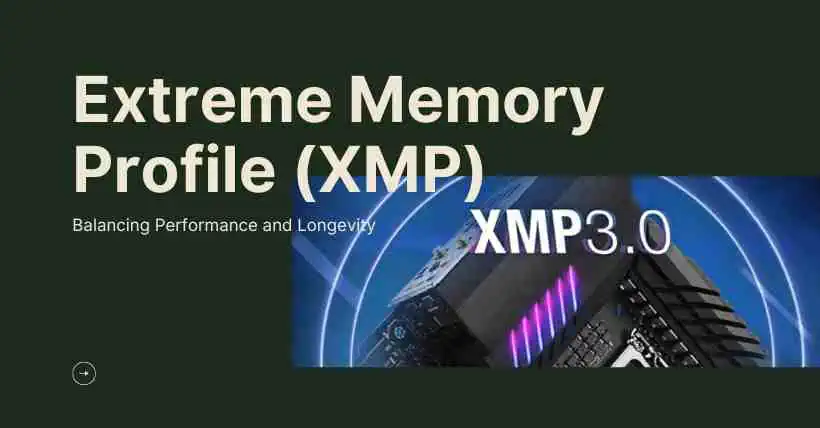The Extreme Memory Profile (XMP) introduces a heightened configuration setting for computer memory, significantly enhancing system performance. As the memory leaves the factory, manufacturers embed two sets of functional configuration files into designated memory areas. These configurations meticulously outline the memory’s frequency, timing, voltage, and various parameters essential for optimal functionality.
1. How XMP Functions
When users activate XMP, the motherboard instantly retrieves the XMP configurations from the memory. This automatic adjustment propels the memory into an overclocked operational state, allowing it to function at amplified frequencies. The resultant outcome is an apparent boost in the computer’s performance capabilities.
2. Prolonged Activation: Pros and Cons
However, extended use of XMP mode may pose certain impacts and wear on computer hardware. Firstly, continuous XMP activation may significantly reduce the lifespan of the memory module. The escalated frequencies and voltages in XMP mode could contribute to accelerated aging, damage, or the onset of instability within the memory chips.
Secondly, the persistent activation of XMP could adversely affect the overall stability of the computer system. The heightened frequencies and voltages, especially in conjunction with inadequate cooling systems, might lead to instances of overheating or system crashes.
Moreover, the sustained activation of XMP might place additional stress on the computer’s power supply. The increased voltage demands necessitated by XMP mode could strain the power output. Inadequate power quality or insufficient wattage might result in recurrent system reboots or crashes.
3. Guidance for Users
Hence, it is paramount for users to judiciously weigh the benefits against the drawbacks when contemplating the activation of XMP mode. Enabling XMP mode when necessary for performance improvements is advisable, accompanied by meticulous attention to the maintenance and upkeep of computer hardware to ensure extended operational longevity.
4. Balancing Benefits and Drawbacks
While the benefits of XMP mode are undeniably remarkable, it’s crucial to note that for mid-range to lower-end memory modules, the performance elevation through XMP might be relatively modest. Consequently, it’s prudent for users not to set excessively high expectations for these memory types.
5. Conclusion
In conclusion, the advantages of XMP activation considerably outweigh the drawbacks, provided users exercise prudence and caution. By adhering to proper maintenance practices and considering the hardware’s actual requirements, users can leverage the performance enhancement that XMP offers without compromising the longevity of their systems.
6. Frequently Asked Questions (FAQs)
-
Is enabling XMP mode safe for all types of memory?
Enabling XMP mode is generally safe, but for mid-range to lower-end memory, the performance gain might be minimal, and the additional stress on the hardware should be considered.
-
Can prolonged XMP activation damage my computer?
Prolonged XMP activation might lead to accelerated aging or instability of memory modules, affecting the overall stability of the system.
-
How often should I enable XMP mode?
Enable XMP mode when performance improvement is necessary, ensuring adequate cooling and power supply to mitigate potential risks.
-
Does XMP mode affect my computer’s warranty?
Generally, enabling XMP mode does not void warranties, but it’s recommended to review the manufacturer’s guidelines.
-
Are there alternatives to XMP for performance enhancement?
Overclocking manually or using alternative BIOS settings could offer performance improvements, but they come with similar risks and complexities.




